Ensuring the safety and well-being of our pets during hurricanes requires meticulous planning and proactive measures. Expert tips can provide invaluable guidance for pet owners looking to protect their furry companions in the face of natural disasters.
From creating evacuation plans to stocking up on essential supplies, there are vital steps that every pet owner should take to prepare for such emergencies. By following these expert recommendations, pet owners can equip themselves with the knowledge and tools needed to navigate the challenges of hurricane season effectively.
Key Takeaways
- Create evacuation plans and prepare essential items for pets before a hurricane hits.
- Ensure pets are safe indoors during the storm with distractions and monitoring.
- Check pets for injuries post-storm and provide necessary care and comfort.
- Plan for pet safety and recovery by stocking up on supplies and being prepared for emergencies.
Evacuation Plans and Pet Carriers
When preparing for hurricanes, it is crucial to establish evacuation plans for your pets and ensure they have proper carriers for safe transport to designated shelters or safe locations. Pets should be accustomed to their carriers beforehand, making evacuation smoother during emergencies. Choose carriers that provide enough space for pets to stand, turn around, and lie down comfortably.
Additionally, ensure carriers are well-ventilated and secure to prevent escapes. Keep identification tags with current contact information attached to the carriers. Practice loading and unloading pets in carriers to minimize stress during actual evacuations.
Trusted Caregivers and Boarding
In the process of preparing your pets for hurricanes, ensuring their safety extends to arranging for trusted caregivers or boarding facilities in case evacuation becomes necessary. When selecting caregivers or boarding options, consider factors like location, staff expertise, and accommodations for your pet's specific needs.
Here are some key points to consider:
- Research Local Boarding Facilities: Look for reputable facilities with a clean and safe environment for pets.
- Establish Emergency Contacts: Provide caregivers or boarding facilities with emergency contacts and detailed care instructions for your pets.
- Visit in Advance: If possible, visit the facility in advance to ensure it meets your standards and your pet's comfort level.
- Prepare a Pet Evacuation Kit: Pack a kit with your pet's essentials, including food, medications, medical records, and comfort items for their stay.
Safe Room Time During Storm
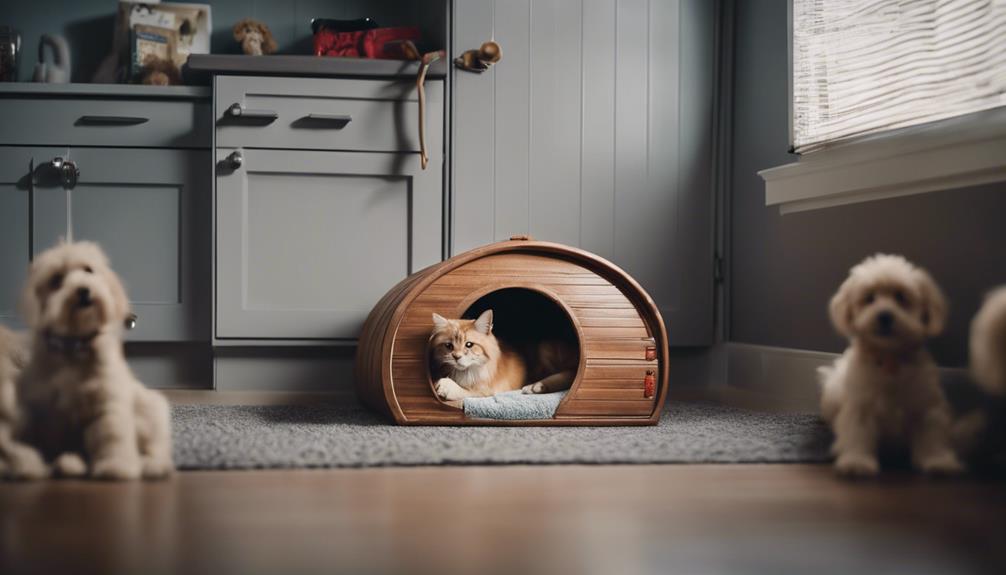
During a hurricane, creating a secure and comfortable safe room for your pets is essential to protect them from potential dangers and keep them calm. Choose an interior room without windows, such as a bathroom or a basement, where your pets can seek refuge during the storm.
Remove any hazardous items or clutter that could cause harm. Provide familiar bedding, toys, and blankets to help keep them calm. Consider playing soothing music or white noise to drown out the storm's sounds.
Stay with your pets in the safe room to provide comfort and reassurance. Monitor their behavior for signs of distress and be prepared to act accordingly to ensure their safety and well-being.
Microchips and Identification
Ensuring the safety and prompt identification of pets during emergencies, such as hurricanes, is crucial in protecting their well-being and facilitating reunification with their owners. To effectively manage pet identification during hurricanes, consider the following tips:
- Microchip your pets: Having your pets microchipped with up-to-date contact information can increase the likelihood of them being returned to you if separated.
- Use collars with ID tags: In addition to microchips, visible identification tags on collars can provide a quick way for others to contact you if your pet is found.
- Keep recent photos: Having recent photos of your pets can help in the search efforts if they go missing during the chaos of a hurricane.
- Prepare a pet emergency kit with identification documents: Include copies of important documents like vaccination records and ownership proof in your pet emergency kit for easy access and verification.
Vaccinations and Parvovirus Prevention
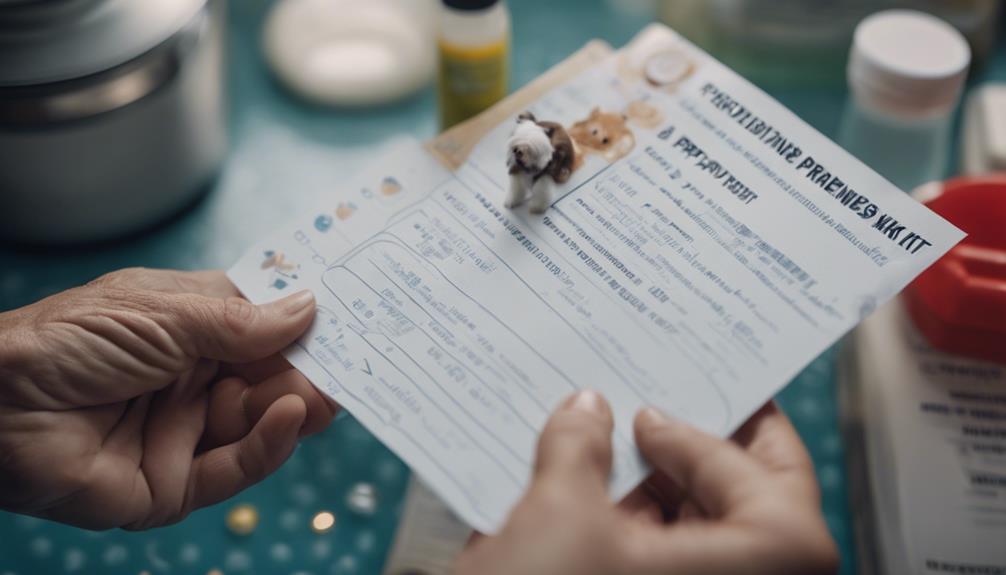
An essential aspect of safeguarding pet health and well-being during emergencies like hurricanes is through prioritizing vaccinations and preventing the spread of diseases such as parvovirus. Vaccinations play a crucial role in protecting pets from contagious and potentially life-threatening illnesses.
Parvovirus, in particular, is a highly contagious virus that affects dogs and can lead to severe gastrointestinal issues and even death if left untreated. Ensuring that pets are up to date on their vaccinations, including the parvovirus vaccine, is vital in reducing the risk of infection during times of crisis.
Stocking Up on Essentials
Stocking up on essential supplies is a critical step in ensuring the well-being and preparedness of pets during hurricanes and other emergencies. To effectively prepare for potential disasters, consider the following items to include in your pet emergency kit:
- Food: Stock up on at least a week's worth of your pet's regular food, stored in a waterproof container.
- Water: Have an ample supply of clean water specifically for your pets, accounting for their size and needs.
- Medications: Ensure you have a supply of any necessary medications your pet may require, along with instructions for administration.
- Comfort Items: Include familiar toys, blankets, or bedding to help reduce stress and provide comfort during challenging times.
Pet Emergency Kit Preparation
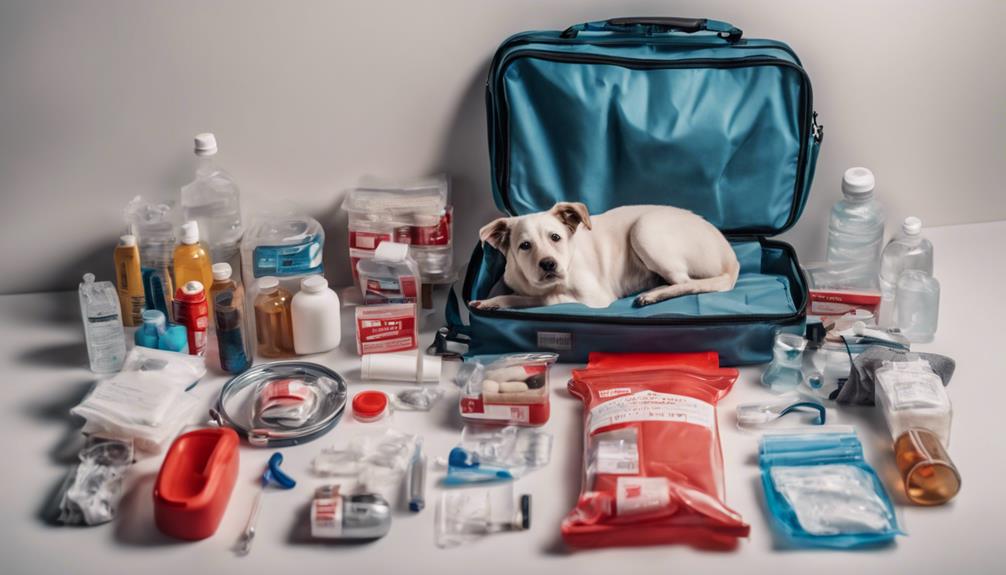
To adequately equip your pet for potential emergencies, assembling a comprehensive pet emergency kit is paramount for ensuring their safety and well-being during challenging situations like hurricanes.
Your pet emergency kit should include essential items such as a supply of food and water for several days, medications, copies of medical records, a first aid kit, familiar bedding, toys for comfort, and sanitation supplies.
Additionally, pack items specific to your pet's needs, such as leashes, carriers, and any special dietary requirements. Remember to regularly check and update the contents of the emergency kit to ensure everything remains fresh and in good condition.
Having a well-prepared pet emergency kit can make a significant difference in keeping your furry friend safe during hurricanes and other emergencies.
Indoor Safety Measures
Implementing proper safety protocols within indoor spaces is crucial for safeguarding pets during the tumultuous conditions of a hurricane. To ensure the well-being of your furry companions indoors, consider the following measures:
- Secure Room: Keep pets in a secure room away from windows to minimize exposure to potential hazards.
- Comfort Items: Provide familiar items like blankets, toys, and bedding to help pets feel secure and comfortable during the storm.
- Identification Tags: Ensure pets wear identification tags with updated contact information in case of separation.
- Emergency Supplies: Have essential supplies such as food, water, medications, and first aid kit readily available to meet your pets' needs.
Distractions and Anxiety Reduction
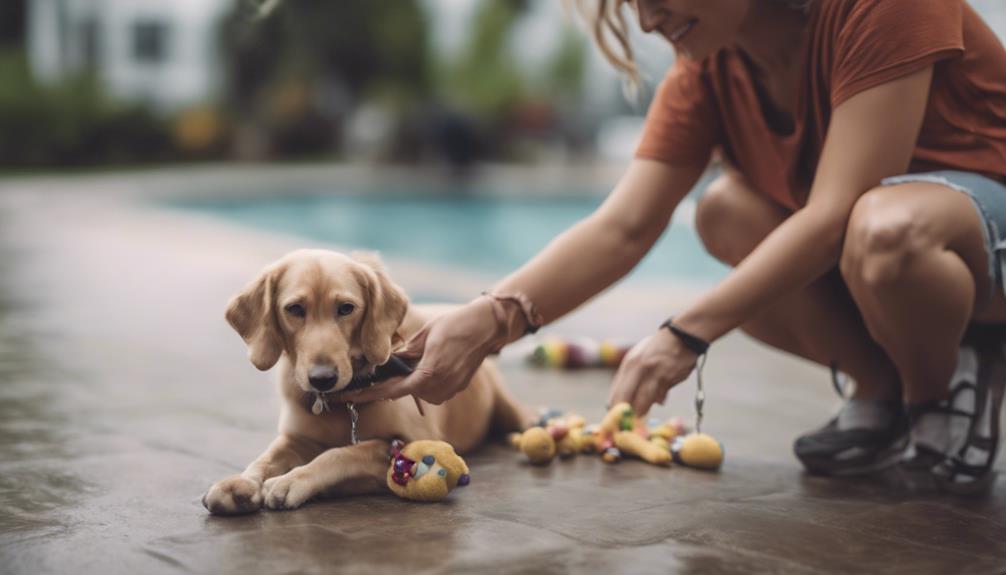
During turbulent weather conditions such as hurricanes, providing pets with distractions and activities can significantly reduce their anxiety levels and promote a sense of calm and security.
When faced with the stress of a hurricane, pets may exhibit signs of anxiety such as pacing, panting, or hiding. Offering distractions like interactive toys, puzzle feeders, or calming music can help redirect their focus and alleviate their worries.
Engaging pets in playtime or training exercises can also be beneficial in keeping their minds occupied and reducing their anxiety levels.
Additionally, creating a safe and comfortable environment with familiar items like blankets or clothing with your scent can provide reassurance and comfort to your pets during the storm.
Monitoring and Power Outages
In the midst of a hurricane, ensuring the safety and well-being of pets involves vigilant monitoring and addressing challenges such as power outages effectively. Here are some essential tips for managing monitoring and power outages during a hurricane:
- Stay Informed: Keep abreast of weather updates and evacuation orders to make informed decisions regarding your pets.
- Backup Power: Have a plan in place for alternative power sources such as generators to ensure essential equipment like heating pads or oxygen tanks can still function.
- Emergency Contacts: Maintain a list of emergency contacts including local animal shelters, veterinarians, and pet-friendly hotels in case of evacuations.
- Battery-operated Devices: Stock up on batteries for flashlights, radios, and other essential devices to navigate power outages effectively.
Post-Storm Veterinary Care
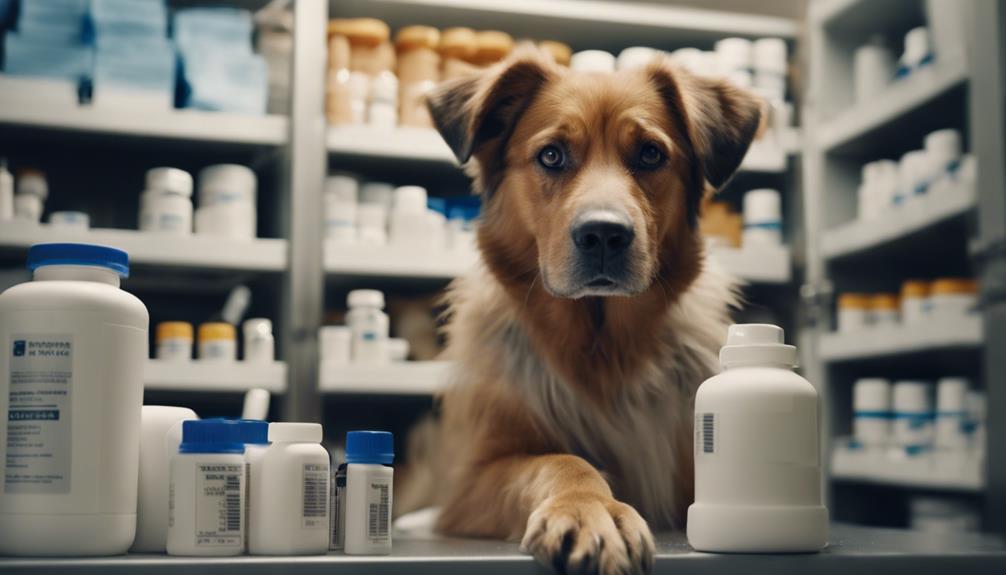
Following a hurricane, prioritizing prompt and thorough veterinary care for pets is essential to ensure their health and well-being in the aftermath. It is crucial to check pets for any injuries or signs of illness post-storm. If any health concerns arise, seeking veterinary care promptly is recommended to address any issues and prevent complications.
Additionally, cleaning up debris and hazards from the environment is crucial to ensure pet safety and prevent accidents. Providing access to clean water and food is also vital for your pets' well-being. It is important to monitor pets closely for any signs of distress or illness after the storm, offering them comfort and reassurance during the recovery period.
Debris Cleanup and Water Access
Prioritizing the thorough cleanup of debris and ensuring access to clean water are crucial tasks in the immediate aftermath of a hurricane to safeguard your pets' well-being. To effectively address these priorities, consider the following:
- Clearing Debris: Remove any fallen branches, sharp objects, or hazardous materials from your property to prevent injuries to your pets.
- Securing Water Access: Ensure that your pets have access to clean water by checking and refilling their water bowls frequently.
- Checking Water Quality: Test the quality of any standing water sources to prevent contamination that could harm your pets.
- Creating Safe Spaces: Establish designated areas free of debris where your pets can rest and play without encountering hazards.
Recovery Period Comfort and Support

After ensuring the safety and well-being of your pets through debris cleanup and water access following a hurricane, providing comfort and support during the recovery period is paramount. This phase is crucial for helping pets cope with the aftermath of the storm. To assist in their recovery, consider the following key elements:
| Comfort and Support Strategies | Description |
|---|---|
| Establish Routine | Maintain regular feeding and walking schedules to provide stability. |
| Create Safe Spaces | Set up cozy areas with familiar bedding and toys for security. |
| Monitor Behavior | Watch for signs of anxiety, fear, or illness that may require attention. |
| Offer Affection and Reassurance | Provide extra cuddles and attention to soothe and comfort your pets. |
Conclusion
In conclusion, thorough preparation and proactive measures are essential to ensure the safety and well-being of pets during hurricanes.
By following expert tips such as creating evacuation plans, stocking up on essentials, and prioritizing identification and vaccinations, pet owners can minimize risks and provide necessary care for their furry companions.
Stay informed, stay prepared, and prioritize the safety and comfort of your pets during hurricane season.




